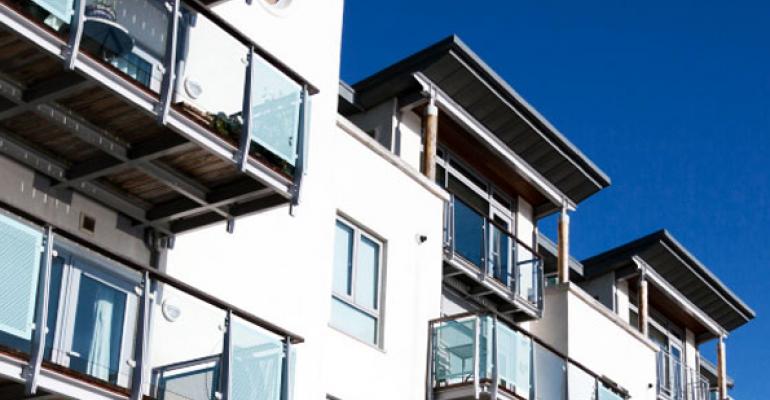There appear to be enough new renters to help fill the many new apartments opening over the next two years.
“Rental demand is driving the housing recovery,” according to the State of the Nation’s Housing report for 2016 from the Joint Center for Housing Studies of Harvard University. “With the economy nearing full employment and incomes beginning to climb, household growth returned to its expected pace… in 2015.”
Developers are building a high number of new apartments, and the percentage of vacant units has recently begun to rise as these new apartments open in cities across the country. But demand from new renters will help fill these units as many young people who delayed forming their own households for years finally sign leases for their own apartments.
Multifamily construction outlook
Over the next two years, developers are expected to continue to build more new apartments than usual. They started construction on 395,000 new apartments in 2015—far more than the 331,000-per-year rate experts consider normal, according to the National Association of Home Builders’ (NAHB) Spring Construction Forecast Webinar.
Developers are expected start construction on another 379,000 units in 2016. That’s a little less than 2015, but still far more than normal. Then in 2017, the number will jump to 402,000, which would be another huge year for new construction, according to NAHB.
“Construction is continuing to ramp up. It’s been strong for four years now,” says Daniel McCue, senior research associate at the Joint Center for Housing Studies and Harvard University.
High demand for apartments
So far, the strong demand for apartments has been enough to fill most of these new units. “There has been a big surge in rental demand over the last 10 years,” says McCue. Over the last decade, the number of renter households grew by 9 million, he says. In 2015 alone, the U.S. Census’ housing vacancy survey counted 1.4 additional renter households compared to 2014, including both single-family rental houses and apartments.
“Last year was the largest single year,” says McCue.
Household formations are projected to accelerate. Even now, years into the economic recovery, millions of young people are still waiting to form households, and these new households could add to the demand for rental housing. Between 2008 and 2014, the slowdown resulted in 5.1 million fewer household formations than normal, according to data and analysis from Freddie Mac.
These new households will help mop up the flood of new apartments that developers plan to build. The percentage of vacant apartments has begun to creep upwards in 2016, according to many rental housing experts. However, that vacancy rate is rising slowly and from an extremely low level. The percentage of apartments that were vacant in 2015 was just 7.1 percent, according to the U.S. Census. That’s the lowest level ever recorded by the Census.
Homebuilders optimistic
Renewed competition from for-sale, single-family homes could provide another challenge to fill these new apartments. But home loans are still difficult to get, especially for younger families.
"Builders remain cautiously optimistic about market conditions," says Robert Dietz, chief economist for the National Association of Home Builders. "2016 should be the first year since the Great Recession in which the growth rate for single-family production exceeds that of multifamily. And we see single-family growth accelerating in 2017 as the supply side chain mends and we can expand production."
Freddie Mac is projecting 5.9 million total home sales this year, the highest level since 2006, and 6.2 million in 2017. "Demographic tailwinds are helping to propel the housing market forward," says Len Kiefer, deputy chief economist at Freddie Mac.
Also, there are fewer defaults and less foreclosures, according to Freddie Mac’s Kiefer. “There is reduced distress and there are fewer exits from homeownership,” says McCue. “That is a sign of recovery in the homeownership markets.”
However, lenders are still resistant to making loans to many potential homebuyers, especially younger people who may not have built a credit history or gathered enough money for a large down payment. “We see no signs of any relaxing of lending constraints,” says McCue. “There is not much progress in the growth of first time homeownership.”

